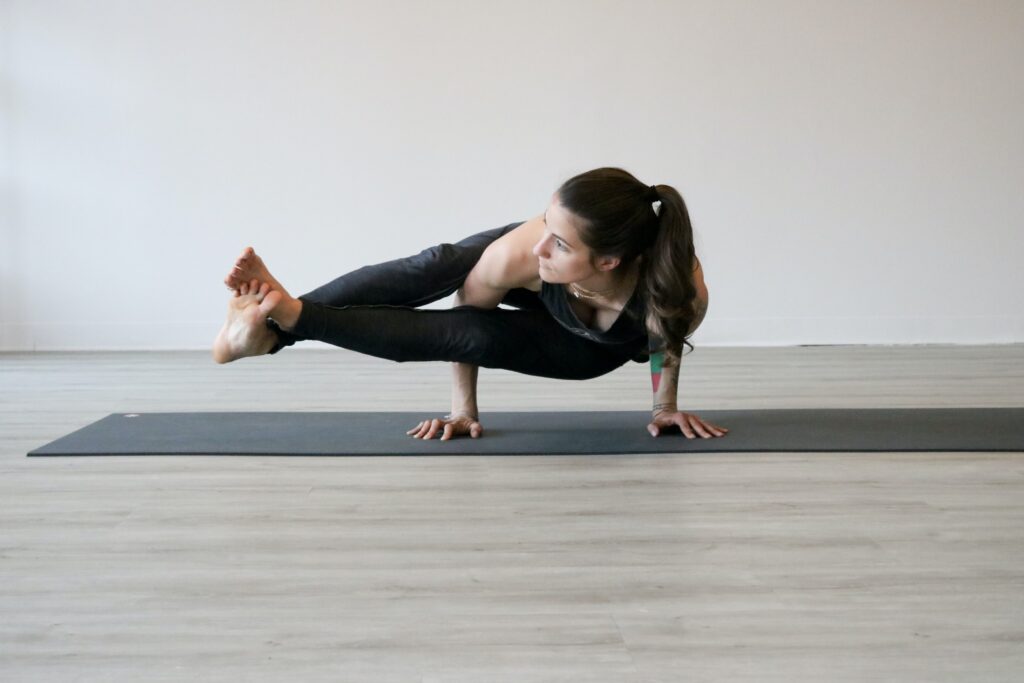What Does Stretching Do to the Muscles – Science-based Benefits
We all tend to warm up before a workout with light walking or jumping jacks, but stretching is the vital next step. People recommend stretching to prevent injury and reduce mobility issues, but does forcing the muscles to move like this actually help?

Here is what stretching does to the muscles, with science-based facts, benefits, risks, and information on how to stretch properly. Different types of stretches can be used at different points of your day.
What is Stretching
Stretching is a form of exercise that aims to lengthen and strengthen the muscles. It is meant to enhance mobility, flexibility, and muscle elasticity. Any type of position in which you stretch your muscles is meant to increase the range of motion.
Stretching is said to be important to keep the muscles strong, flexible, and healthy. Let’s see what it does to the muscles and if there is science to back it up.
What Does Stretching Do to Muscles
Muscles are composed of various components and tissues. They are made up of different types of proteins, molecules, and storages of energy. When stretching occurs, the muscles are pushed to a limit, put under tension, and elongated safely.
Stretching should never be painful. It increases the range of motion of your muscles. Without stretching, the joints and muscles may be put under tension and be strained in regular day-to-day activity.
When you stretch, the muscle stretches, the protective layer around tissues elongates and the tendons lengthen.
Benefits of Stretching
Muscles are viscoelastic. This means that they have elasticity and fluid viscosity properties. When they stretch, the muscles remember and can move into that position with more ease.
Stretching allows the muscles and surrounding tissue to maintain their strength, which reduces the likelihood of injury. Stretches will strengthen the muscles. Allowing the muscles to elongate and stretch will reduce injury.
Types of Stretching
While stretching is beneficial, different types of stretching have their pros and cons. Check out what the different types of stretches there are and when to use them.
Dynamic Stretching
This is a kind of controlled movement that is active. Dynamic stretching involves moving into and out of a stretching position. An example of this would be lunging.
Dynamic stretching can be used before a workout as it can help physically warm up the body before more rigorous activity.
Static Stretches
This type of stretch involves moving into a position and holding it for 20 to 45 seconds. It keeps the muscles at a certain point of tension but is not painful. Static stretches are to be repeated 2 to 3 times.
It is very effective for a cool down after a workout.
Yoga
Yoga is a physical practice involving stretched poses, breathing, and relaxation. These poses aim to promote emotional, mental, and physical wellbeing. The good thing about yoga is that it also stretches and strengthens the muscles, joints, and ligaments of the body.
Try out the top 10 yoga movies you should try to start your day with today.
Where to Start
Here are some stretches for important muscle groups.
Lower Body
Aim to stretch important muscle groups such as the lower body; your calves, hamstrings, hips, and thighs. Lunges, runner’s stretches, and hamstring stretches are all good for those muscle groups.
Back
It is also important to get in some stretches for your lower back. You can get a full guide to lower back stretches here, but some include a knee-to-chest stretch that can work for the lower back. Cat-cow is also very good for the back as well.
Upper Body
You should also do stretches for your shoulders, neck, and chest. Stretching the chest is as easy as drawing the shoulders up down and back. For the neck, simply tilt the head to one side, hold, and then switch sides.
The Takeaway
Stretching changes the muscles, improving mobility, and range of motion, while reducing the risk of injury. Make sure you stretch daily, before and after a workout. A low-impact exercise, like yoga, is also a great way to add stretches to your routine.
Remember that health comes from within, so eat well-balanced meals, work out, and take care of your mental health. Know that a nutritious diet is important in order to allow wellness to improve. What we eat and do become the building blocks of our emotional, mental, and physical wellbeing.
Also, ensure you take care of gut health for even more health benefits. Learn everything you need to know about gut microbiota today for free here!





